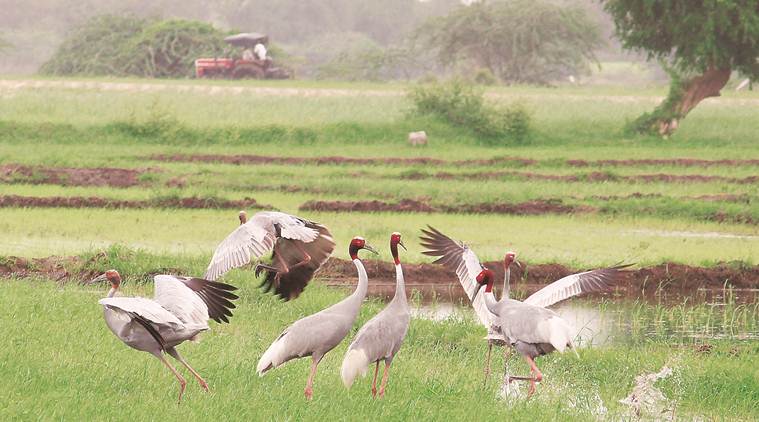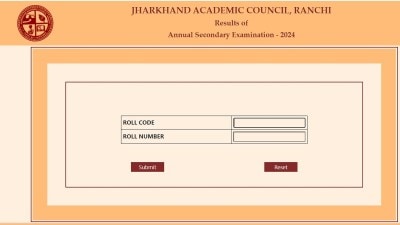- India
- International
India and Russia propose to collaborate for conservation of migratory arctic birds
India is one of the 30 countries part of the Central Asian flyway of migratory birds as well as part of the migration route of migratory Arctic birds.
 The collaboration between the two countries will also strengthen India’s bird conservation efforts. (File)
The collaboration between the two countries will also strengthen India’s bird conservation efforts. (File)
India and Russia have proposed to collaborate for the conservation of migratory arctic bird species and strengthen bird conservation efforts of India on the sidelines of the 13th Conference of Parties to the Convention on the Conservation of Migratory Species of Wild Animals (CMS COP13), in Gandhinagar on Thursday.
Soumitra Dasgupta, Inspector General Forests (wildlife) of India, and officers of the Indian Ministry of Earth Sciences met Yevgeny Syroechkovskiy, a bird expert who is adviser to the Russian Ministry of Natural Resources and Environment and chairman of Arctic Migratory Bird Initiative (AMBI), on the sidelines of India and AMBI, a workshop organised in India Pavilion at Mahatma Mandir, the venue of the COP13.
Dasgupta said that India would like a closer coordination with AMBI, an initiative of Conservation of Arctic Flora and Fauna (CAFF), the biodiversity working group of Arctic Council, for conservation of arctic migratory birds that land on Indian seacoast during winter as part of their annual migration.
“AMBI is playing a very important role in bird conservation but it was a little disconnected from the Ministry of Environment and Forests. Now, we are in contact with Courtney and Dr Evgeny (AMBI coordinator and chairman respectively) as to how we can really develop a connect… We have thought about (a proposal) that AMBI will be providing us technical help for the conservation of birds. The Ministry would take up in a big way conservation of birds of not only Central Asian Flyway (CAF) but the birds of Arctic region also,” he said.
The IGF said that NGOs like Bombay Natural History Society (BNHS) and Salim Ali Centre for Ornithology and Natural History (SACON) have been carrying out bird conservation activities for a long time in India and that now the government also wants to ramp up its efforts. “We already have CAF national action plan. We also have CAF Indian secretariat. Now, we are thinking big, reaching out to all other 29 countries, to take on leadership role as to how take forward the CAF. We want to take bird conservation forward primarily through CAF,” said Dasgupta.

Syroechkovskiy later also held a meeting with officials of the Ministry of Earth Sciences to identify areas of collaboration. Talking to The Indian Express after the meeting, Syroechkovskiy said Russia would like to collaborate in technical aspects and exchanging visits to habitats. “We need to take up collaborative projects in satellite-tagging of birds. We also need exchange visits,” he said.
Flocks of Arctic migratory birds like curlew sandpipers, lesser sand plover, little stint, great knot, red knot land on Indian coastline every year.
In his presentation during the workshop, S Balachandran of BNHS said that the presence of important arctic bird species was declining in India.
Ashwin Viswanathan of the Nature Conservation Foundation, one of the 10 institutes, which prepared State of India’s Birds Report, 2020, that was released on Monday, also said that there was huge decline between 2002 and 2018 in population of seven Arctic bird species visiting India.
“These are alarming numbers. While decline in bird population is a global phenomenon, we were thinking CAF is rather safe. But we are learning now that it is not. We need more information on India and global cooperation here,” Syroechkovskiy told The Indian Express.
Nicola Crockford, principal policy officer of the Royal Society for the Protection of Birds and who is representing Bridlife International at the COP13, said that there was a need for global coastal forum to develop guidelines on sea coasts of the world so that coastal wetlands continue to remain useful to migratory birds.
“Land reclamation activities has happened on huge scale in both the Koreas and China, affecting coastal wetlands, though China introduced a policy two years ago not to do any further land reclamation. We don’t know what is happening in India. But these wetlands are very important for bird flyways,” Crockford told The Indian Express.
She said that coastal waterbirds are one of the three most threatened groups of migratory birds in the world.
Crockford, who had been coordinating efforts to conserve Asian tidal flats said that wetlands are like pearls in a necklace and if one pearl is removed, the entire necklace collapses.
She cited the example of Saemangeum seawall built by South Korea saying that 13 out of 16 bird species found on that wetland declined more than 90 per cent in 2014 as compared to 2006.
Incidentally, India is one of the 30 countries part of the Central Asian flyway of migratory birds as well as part of the migration route of migratory Arctic birds.
Apr 19: Latest News
- 01
- 02
- 03
- 04
- 05






































